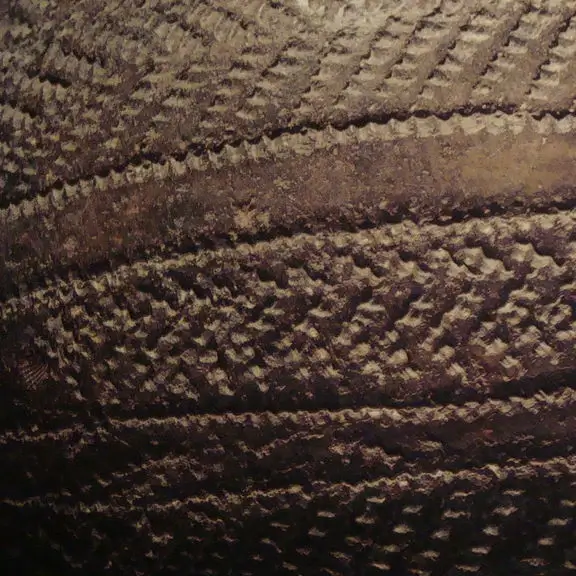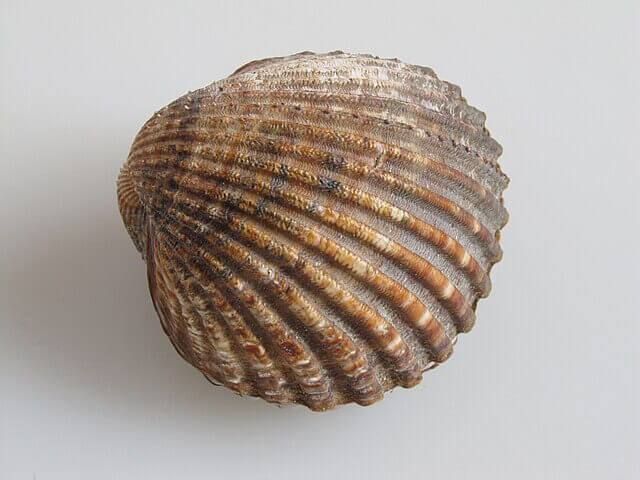Cardial ceramics: A pioneer art

Cardial pottery is a very special type of pottery characterized by its unique decorations with impressions of cockle shells. This ancestral art has its roots in the Mediterranean Neolithic and has spread along the European and African coasts. Discover its techniques and styles, as well as its practical applications in everyday life.
What is cardial ceramics?
The technique of cardial ceramics is known for its distinctive method of decoration, which uses cardium shells, a type of mollusk. Its name derives precisely from the tool used to create the designs: the cardium shell.
The process of making cardial pottery begins in a similar way to other ceramic techniques, with the selection and preparation of the clay. Once the clay is molded into the desired shape, before it is dried or fired, decoration proceeds. Artisans imprint patterns on the wet surface of the clay using the shells. The pressure of the shell on the clay leaves a striated or stippled pattern, creating a variety of designs that can be linear, curved, zigzag or geometric shapes.

These patterns not only serve an aesthetic purpose; they also provide archaeologists and art historians with valuable information about the cultures that produced these pieces. Each design could have specific cultural, symbolic or functional meanings for the community that created it. Once decorated, the pieces are fired, a process that hardens them and makes them more durable.
This type of incised ceramic is distinguished by its beauty and exquisiteness, manifested through different techniques and styles used in its production.
In the following, we will explore some of these distinctive features:
The use of engobes in this ceramic decoration
One of the highlights of cardial ceramics is the use of engobes for decoration. Engobes are mixtures of clays and minerals that are applied to the surface of the ceramic pieces before firing. These engobes, made with natural pigments The use of the “D” and “D” patterns allows for the creation of beautiful designs and patterns, enhancing the beauty of the piece.
Almagra ceramics and its relationship with cardial ceramics
Among the techniques used in this type of pieces, the use of almagra ceramic stands out. The almagra is a reddish clay rich in iron oxide, which gives a characteristic tonality to the cardial vessels. This type of ceramic, associated with the cardial culture, reflects the close relationship between the material used and the artistic style of the time. The same is true of the use of terracotta In the past, firing did not achieve the high temperatures that were later achieved with the use of kilns and the new types of ceramics that could be obtained, such as the porcelain invented by the Chinese pottery.
The art of incised ceramics in the Cardial culture
This technique consists of making drawings and decorative shapes by incising the clay before firing. The incised motifs, which usually represent elements of nature or abstract symbols, give the surface of a work a distinctive character and a unique cultural identity.
Cardial ceramics in different regions
Cardial pottery has left its mark in different regions, both in Europe and on the coasts of the Mediterranean and the Atlantic coasts of Africa. Through archaeological finds, we can study the presence and influences of this pottery in these areas.
Presence of cardial ceramics in Europe
Europe has witnessed its presence in different geographical locations. Fragments of cardial pottery have been found in various archaeological sites, indicating the expansion of this culture. These discoveries reveal the importance of ceramics in the daily life of ancient European communities.
Influences and findings on the shores of the Mediterranean Sea
Cardial pottery has left a significant impact on the coasts of the Mediterranean, where numerous vestiges of this innovative ceramic technique have been found. The findings reveal its cultural and artistic influence in coastal communities, as well as its use in food and liquid storage. These discoveries allow us to better understand the way of life and commercial practices of these ancient civilizations.
Discoveries on the Atlantic coasts of Africa
In addition to its presence in Europe and on the coasts of the Mediterranean, cardial ceramics have also been found on the Atlantic coasts of Africa. These discoveries suggest the expansion and diffusion of the cardial culture beyond the Mediterranean, evidencing the contact between different groups and the transmission of technical knowledge.
Cardial ceramics and its practical applications
Cardial ceramics, in addition to being a decorative art, had several practical applications in the daily life of the communities that produced them. Below, we will explore some of the most outstanding uses and functions of this ancestral ceramic:
Uses and functions of cardial ceramics in daily life
- Food storage: Cardial vessels were ideal for preserving and storing foodstuffs, as their quality ceramics allowed them to maintain their freshness and protect them from humidity and contamination.
- Liquid storage: The robust and airtight design made them optimal containers for storing and transporting liquids such as water, oil or wine. These containers were a fundamental piece in the organization of domestic life.
Impact of navigation on the diffusion of cardial ceramics.
Navigation played a crucial role in the expansion of cardial ceramics. Thanks to the navigational skills of the peoples who developed it, this pottery spread throughout much of the Mediterranean. The vessels used by these communities allowed them to take their culture and ceramic art to different regions of the Mediterranean, influencing the European and African Atlantic coasts.
Although navigation was a determining factor in its diffusion, it is also believed that it came to spread through a wave of technical innovations, which permeated the native population prior to a generalized demographic migration. This combination of factors contributed to cardial pottery becoming a cultural phenomenon of great relevance in the Neolithic Mediterranean.
We hope you liked this post. It will help us if you share it on social networks 👍.